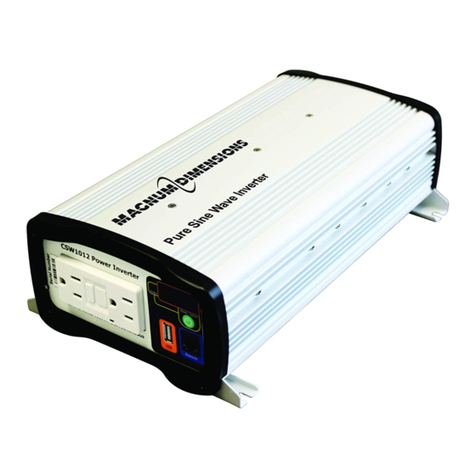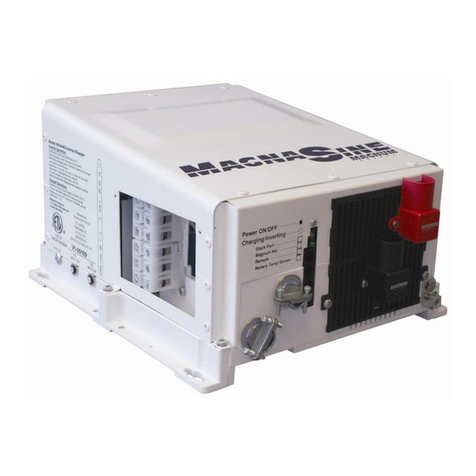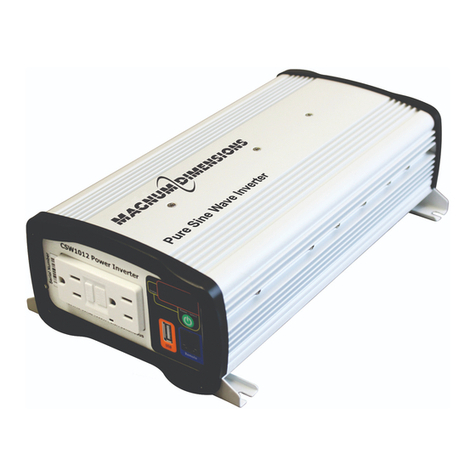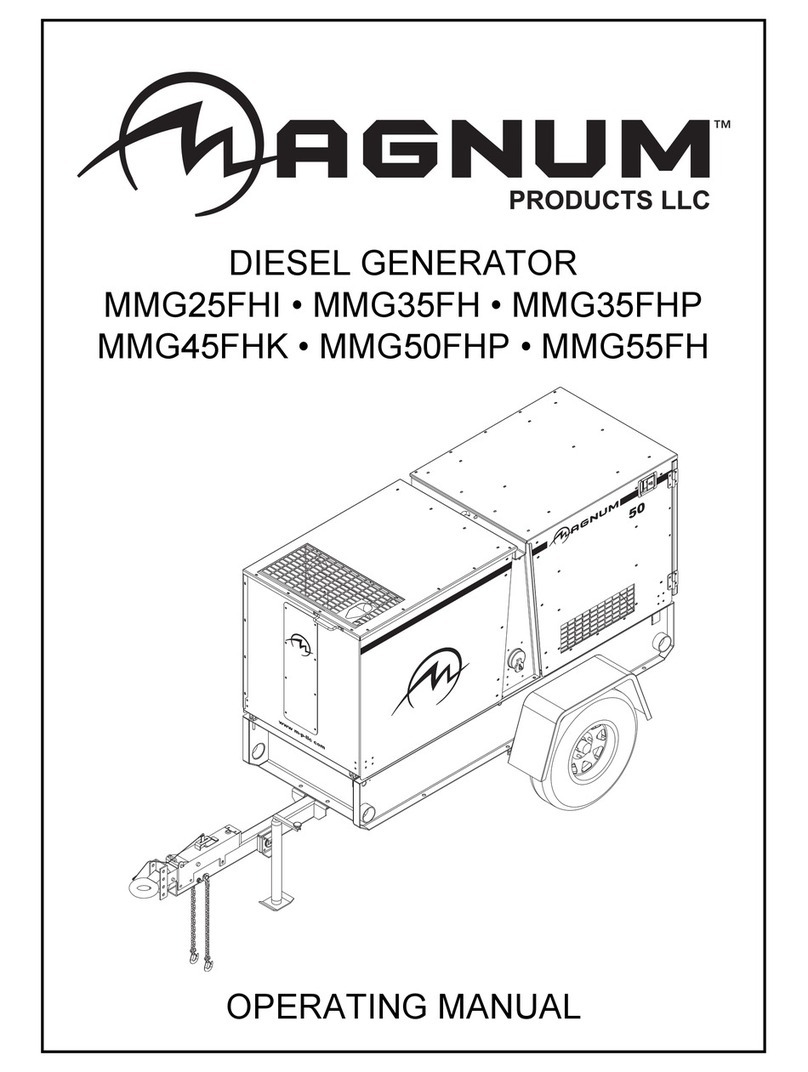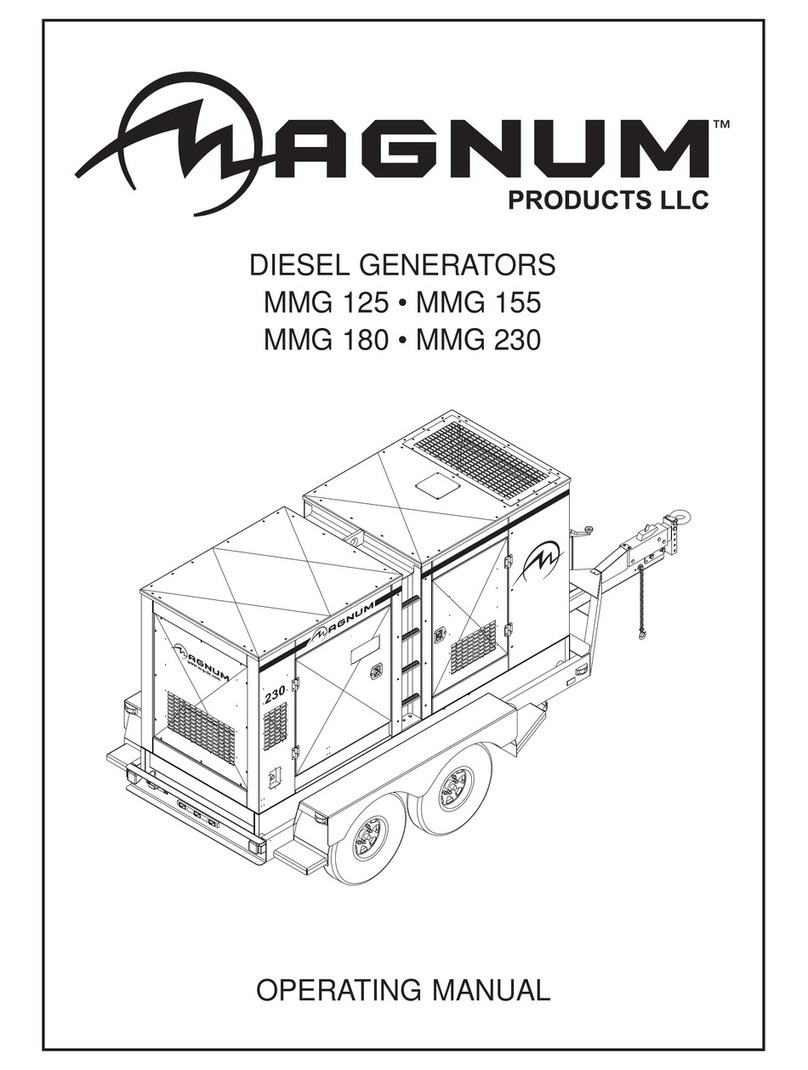
Page vii © 2012 Magnum Energy, Inc.
List of Figures
Figure 1-1, Power Switch, Status LED, and Accessory Connection Ports................................ 2
Figure 1-2, Electrical Connection Points ........................................................................... 3
Figure 1-3, Left Side Features (MS2012, MS2812, MS2024, MS4024) .................................. 4
Figure 1-4, Left Side Features (MS2000 Series) ................................................................ 5
Figure 1-5, AC Waveforms ............................................................................................. 6
Figure 2-1, Simplified Installation Diagram for Permanent Installations ................................ 9
Figure 2-2, Approved Mounting Positions ........................................................................11
Figure 2-3, MS Series Dimensions and Side Reference......................................................12
Figure 2-4, DC and Battery Temperature Sensor Wiring ....................................................15
Figure 2-5, Battery Hardware Installation .......................................................................17
Figure 2-6, Inverter DC Hardware Installation .................................................................17
Figure 2-7, Battery Temperature Sensor .........................................................................19
Figure 2-8, AC Terminal Block .......................................................................................22
Figure 2-9, AC Wiring for Single In – Single Out (30 A) Configurations................................25
Figure 2-10, AC Wiring for Single In – Single Out (60 A) Configurations ..............................26
Figure 2-11, AC Wiring for Single In – Dual Out Configurations ..........................................27
Figure 2-12, AC Wiring for Dual In – Single Out Configurations ..........................................28
Figure 2-13, AC Wiring for Dual In – Dual Out Configurations ............................................29
Figure 2-14, AC Wiring for MS2000 Models .....................................................................32
Figure 2-15, AC Wiring for MS2000-15B/-20B Models .......................................................33
Figure 2-16, Grounding System for MS Series .................................................................34
Figure 2-17, Multiple Connections to DC Ground Rod (Method 1)........................................35
Figure 2-18, Multiple Connections to DC Ground Rod (Method 2)........................................36
Figure 2-19, Single Connection to DC Ground Rod (Method 3) ...........................................36
Figure 2-20, Neutral-to-Ground Connection (Inverter Mode)..............................................39
Figure 2-21, Neutral-to-Ground Connection (Standby Mode)..............................................39
Figure 2-22, Disconnecting the Neutral-to-Ground Connection ...........................................40
Figure 2-23, Connecting a Large DC Ground Wire ............................................................40
Figure 2-24, Warning Label...........................................................................................41
Figure 2-25, AC Voltage Checks.....................................................................................43
Figure 2-26, AC Voltage Checks (MS2000 models) ...........................................................43
Figure 2-27, AC Voltage Checks (MS2000-15B/-20B models).............................................43
Figure 3-1, Power Flow – Inverter Mode..........................................................................44
Figure 3-2, Power Flow – Standby Mode .........................................................................45
Figure 3-3, Automatic 4-Stage Charging Graph................................................................46
Figure 3-4, BTS Temperature to Charge Voltage Change ...................................................47
Figure 3-5, Power Switch and Status Indicator.................................................................49
Figure 4-1, Performing an Inverter Reset ........................................................................54
Figure A-1, MS Series Efficiency Chart ............................................................................56
Figure A-2, MS Series VAC Input to Charge Amps ............................................................56
Figure B-1, Series Battery Wiring...................................................................................60
Figure B-2, Parallel Battery Wiring .................................................................................60
Figure B-3, Series-Parallel Battery Wiring .......................................................................60
Figure B-4, Battery Bank Wiring Examples (12-volt).........................................................61
Figure B-5, Battery Bank Wiring Examples (24-volt).........................................................62






